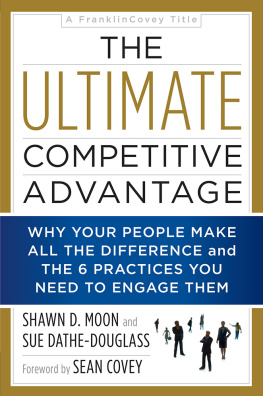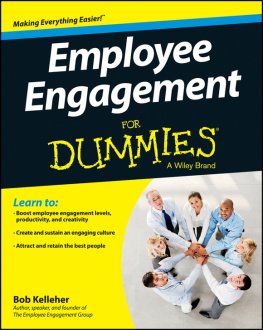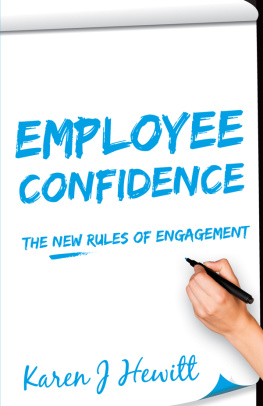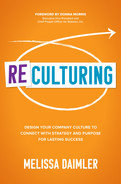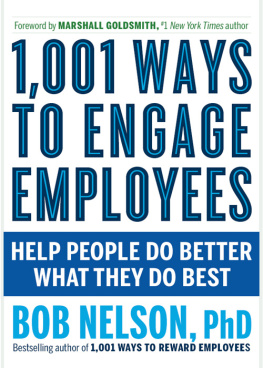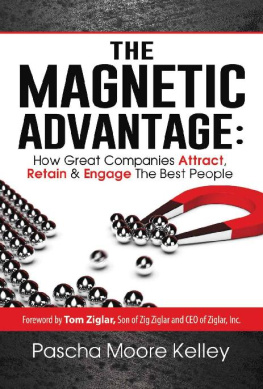
Table of Contents
List of Illustrations
- Chapter 1
- Chapter 2
- Chapter 3
- Chapter 4
- Chapter 5
- Appendix
Guide
Pages
JACK ALTMAN
PEOPLE STRATEGY
HOW TO INVEST IN PEOPLE AND MAKE CULTURE YOUR COMPETITIVE ADVANTAGE

Copyright 2021 John Wiley & Sons. All rights reserved.
Published by John Wiley & Sons, Inc., Hoboken, New Jersey.
Published simultaneously in Canada.
No part of this publication may be reproduced, stored in a retrieval system, or transmitted in any form or by any means, electronic, mechanical, photocopying, recording, scanning, or otherwise, except as permitted under Section 107 or 108 of the 1976 United States Copyright Act, without either the prior written permission of the Publisher, or authorization through payment of the appropriate per-copy fee to the Copyright Clearance Center, Inc., 222 Rosewood Drive, Danvers, MA 01923, (978) 750-8400, fax (978) 646-8600, or on the Web at www.copyright.com. Requests to the Publisher for permission should be addressed to the Permissions Department, John Wiley & Sons, Inc., 111 River Street, Hoboken, NJ 07030, (201) 748-6011, fax (201) 748-6008, or online at http://www.wiley.com/go/permissions.
Limit of Liability/Disclaimer of Warranty: While the publisher and author have used their best efforts in preparing this book, they make no representations or warranties with respect to the accuracy or completeness of the contents of this book and specifically disclaim any implied warranties of merchantability or fitness for a particular purpose. No warranty may be created or extended by sales representatives or written sales materials. The advice and strategies contained herein may not be suitable for your situation. You should consult with a professional where appropriate. Neither the publisher nor author shall be liable for any loss of profit or any other commercial damages, including but not limited to special, incidental, consequential, or other damages.
For general information on our other products and services or for technical support, please contact our Customer Care Department within the United States at (800) 762-2974, outside the United States at (317) 572-3993 or fax (317) 572-4002.
Wiley publishes in a variety of print and electronic formats and by print-on-demand. Some material included with standard print versions of this book may not be included in e-books or in print-on-demand. If this book refers to media such as a CD or DVD that is not included in the version you purchased, you may download this material at http://booksupport.wiley.com. For more information about Wiley products, visit www.wiley.com.
Library of Congress Cataloging-in-Publication Data is Available:
ISBN 9781119717041 (Hardcover)
ISBN 9781119717058 (ePDF)
ISBN 9781119716945 (ePub)
Cover Design and Images: Luc Chaissac/Lattice
To my wife, Julia, and my son, Liam
Introduction: Why Your Company Should Put People First
In early 2015, I experienced something of a professional crisis. The company I had worked for and loved for more than two years seemed to have lost its magic. It had quickly grown from a plucky start-up, with a vibrant company culture and clearly defined roles, to a stifling environment that was wrought with tension and a crippling lack of trust.
I remember while sitting at my desk one day, I just looked around the office and thought to myself, What happened?
To understand where it went wrong, we have to go back a few years. In 2013, I packed my bags, bid farewell to my 600-square-foot Manhattan apartment, and headed out to San Francisco to join this fledgling start-up. I suppose that you could describe it as risky, but I knew this company quite well. I'd been working from New York as an early-stage start-up investor, and Teespring (https://teespring.com/) was one of the companies in which I'd invested. I strongly believed that the founders and the business were brimming with potential.
My early days at Teespring represented the best of what's possible for a company culture. For one thing, we had a clear sense of purpose that was uniformly shared; we existed to help Internet creators make businesses out of their passions. We all knew what we wanted to accomplish as a company, why that would be valuable to the world, and what our roles were in making that a reality.
Another cornerstone of our culture was that we were all learning and growing at a rapid pace. Because the company was evolving so quickly, we were all constantly being thrown into new situations and we were determined to figure them out. As a result, most of us were improving our crafts and broadening our knowledge faster than at any other point in our careers. This was extremely gratifying and engaging, which created a virtuous cycle: invest more, learn more, feel great, be motivated to invest more, and so on.
Finally, because of our clear mission, shared values, and full engagement in our work, we built incredibly close friendships and a strong collective community. This too had a self-reinforcing dynamic, where our care for one another led to deeper investment in our work and vice versa. Even today, nearly eight years later, I am still friends with many of those early colleagues from Teespring.
Somewhere along the way, however, this company which my teammates and I held so dear took a bad turn. The culture shifted from one of clarity, optimism, and community to one of scattered priorities, fear, and territorialism. Our executive team meetings, which had once been focused on solving our most important problems, became full of interpersonal tension and disagreements about important strategic issues. Teams across the company became more siloed, and their connections became increasingly tenuous. We underinvested in HR and people management practices, so people didn't have clear goals or expectations, feedback was irregular or nonexistent, and the company didn't do enough to understand how its employees were feeling so that we could make course corrections.
In short, our culture lost its way. It was against this backdrop that the idea for Lattice was born (https://lattice.com/).
Eric Koslow was another early Teespring employee (he'll remind anyone who will listen that he was just a little bit earlier than me), and he and I had become good friends. Eric was Teespring's lead engineer, but he was also an astute observer of business dynamics and company culture. He also shared my love for what Teespring used to be and my pain over the direction things had been heading.
One of our favorite extracurricular activities was exercising together. I say exercise in quotes because we'd meet in the gym, and over the course of 90 minutes, maybe do 5 minutes' worth of exercise and 85 minutes' worth of talking. This time away from our phones and with the extra mental acuity from vague physical activity was a perfect breeding ground for countless start-up ideas. Eventually, we realized that the problem that we cared about most, and had some ideas for how to solve, was company culture and people management.
In the summer of 2015, we incorporated Lattice. We aimed not to just get back that feeling of clear mission, shared values, and passionate engagement in our work in a company that was our own. We also wanted to build a product that would help other companies invest deeply in people and culture that would make their companies the best places to work.
Next page


